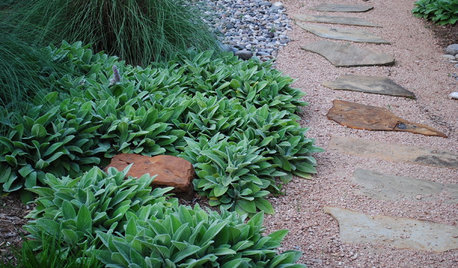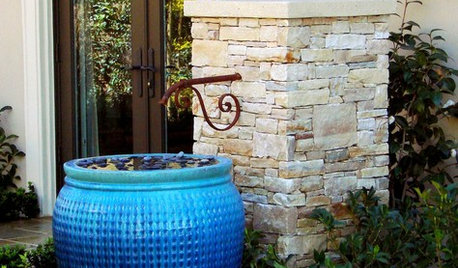Abrupt Water Loss
mgeca
13 years ago
Related Stories

LIFEHow to Prepare for and Live With a Power Outage
When electricity loss puts food, water and heat in jeopardy, don't be in the dark about how to stay as safe and comfortable as possible
Full Story
SAVING WATER11 Ways to Save Water at Home
Whether you live in a drought-stricken area or just want to help preserve a precious resource, here are things you can do to use less water
Full Story
SAVING WATERXeriscape Gardens: How to Get a Beautiful Landscape With Less Water
Conserve water and make gardening much easier with the xeriscape approach’s 7 principles
Full Story
LANDSCAPE DESIGNHave Your Garden Fountain and Be Water Wise Too
Learn which water features are more suited to conservation, and get strategies for placement and use
Full Story
GREEN BUILDINGJust Add Water: Rain Barrel Magic
Take your rainwater storage from practical to beautiful with a new breed of design-friendly rain barrels
Full Story
SAVING WATERLush Gardens With Low Water Needs
Drought tolerant doesn’t have mean spindly, brown and thorny
Full Story
LANDSCAPE DESIGN10 Ideas for a Creative, Water-Conscious Yard
Check out these tips for a great-looking outdoor area that needs less water
Full Story
GARDENING AND LANDSCAPINGFall for a Water-Wise Fountain
No need to sacrifice beauty in the interest of water conservation — these smart fountain designs let you have both
Full Story
GREAT HOME PROJECTSHow to Switch to a Tankless Water Heater
New project for a new year: Swap your conventional heater for an energy-saving model — and don’t be fooled by misinformation
Full Story
DISASTER PREP & RECOVERYRemodeling After Water Damage: Tips From a Homeowner Who Did It
Learn the crucial steps and coping mechanisms that can help when flooding strikes your home
Full StoryMore Discussions







mgecaOriginal Author
sleeplessinftwayne
Related Professionals
Folsom Landscape Architects & Landscape Designers · Fort Lee Landscape Architects & Landscape Designers · Leawood Landscape Architects & Landscape Designers · River Forest Landscape Architects & Landscape Designers · Brookfield Landscape Contractors · Costa Mesa Landscape Contractors · Goodlettsville Landscape Contractors · Hannibal Landscape Contractors · Oklahoma City Landscape Contractors · Pahrump Landscape Contractors · San Pedro Landscape Contractors · Smyrna Landscape Contractors · Goldenrod Landscape Contractors · Norridge Landscape Contractors · Baileys Crossroads Landscape Contractorsernie_m
mike_il
mgecaOriginal Author
frogman4_gw
mgecaOriginal Author
mike_il
mgecaOriginal Author
mike_il
contraryjim
frogman4_gw
Antoinette0708
waterbug_guy
Antoinette0708
waterbug_guy